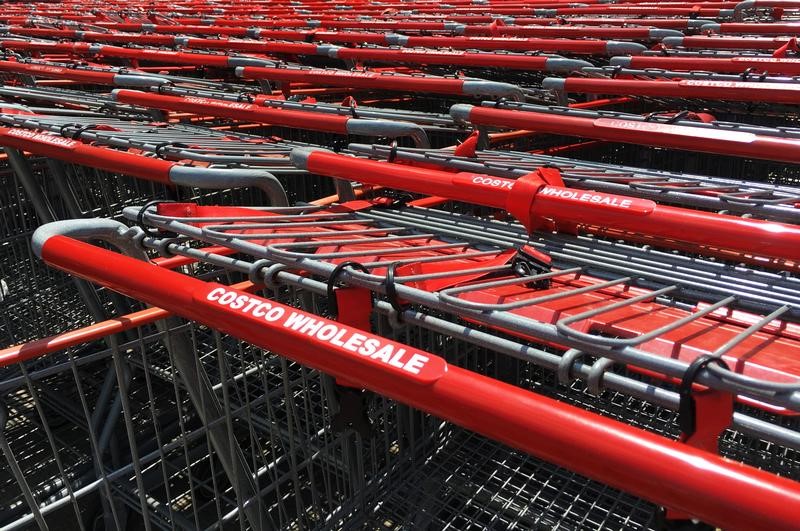This post was originally published on this site
https://d1-invdn-com.investing.com/content/pic626f0bc90d12d54d1e5c4302a92bf9fc.jpeg
Membership-only discount retailer Costco (NASDAQ:COST)
reported Q4 FY2023 results beating Wall Street analysts’ expectations, with revenue up 9.5% year on year to $78.9 billion. Turning to EPS, Costco made a GAAP profit of $4.86 per share, improving from its profit of $4.20 per share in the same quarter last year.
Is now the time to buy Costco? Find out by reading the original article on StockStory.
Costco (COST) Q4 FY2023 Highlights:
Large-format Grocery & General Merchandise RetailerBig-box retailers operate large stores that sell groceries and general merchandise at highly competitive prices. Because of their scale and resulting purchasing power, these big-box retailers–with annual sales in the tens to hundreds of billions of dollars–are able to get attractive volume discounts and sell at often the lowest prices. While e-commerce is a threat, these retailers have been able to weather the storm by either providing a unique in-store shopping experience or by reinvesting their hefty profits into omnichannel investments.
Sales GrowthCostco is a behemoth in the consumer retail sector and benefits from economies of scale, an important advantage giving the business an edge in distribution and more negotiating power with suppliers.
As you can see below, the company’s annualized revenue growth rate of 12.2% over the last four years (we compare to 2019 to normalize for COVID-19 impacts) was impressive as it opened new stores and grew sales at existing, established stores.
This quarter, Costco reported solid year-on-year revenue growth of 9.5% and its revenue of $78.9 billion outperformed analysts’ estimates by 1.25%. Looking ahead, the analysts covering the company expect sales to grow 4.91% over the next 12 months.
Number of Stores
When a retailer like Costco is opening new stores, it usually means that demand is greater than supply, and in turn, it’s investing for growth. Since last year, Costco’s store count increased by 23 locations, or 2.74%, to 861 total retail locations in the most recently reported quarter.
Over the last two years, the company has generally opened new stores and averaged 2.69% annual growth in its physical footprint, which is decent and on par with the broader sector. With an expanding store base and demand, revenue growth can come from multiple vectors: sales from new stores, sales from e-commerce, or increased foot traffic and higher sales per customer at existing stores.
Same-Store Sales
Costco’s demand within its existing stores has generally risen over the last two years but lagged behind the broader consumer retail sector. On average, the company’s same-store sales have grown by 8.42% year on year. With positive same-store sales growth amid an increasing physical footprint of stores, Costco is reaching more customers and growing sales.
In the latest quarter, Costco’s same-store sales rose 3.8% year on year. By the company’s standards, this growth was a meaningful deceleration from the 10.4% year-on-year increase it posted 12 months ago. One quarter fluctuations aren’t material for the long-term prospects of a business, but we’ll watch Costco closely to see if it can reaccelerate growth.
Key Takeaways from Costco’s Q4 Results
With a market capitalization of $248 billion, a $15.2 billion cash balance, and positive free cash flow over the last 12 months, we’re confident that Costco has the resources needed to pursue a high-growth business strategy.
It was good to see Costco beat analysts’ revenue and EPS expectations this quarter, even though the beat was relatively small. On the other hand, all-important same store sales growth missed slightly, driven by underperformance in the US. Overall, this was a fine quarter for Costco with no major surprises. The market was probably expecting something slightly better, and the stock is down 1.67% on the results and currently trades at $544.25 per share.
The author has no position in any of the stocks mentioned in this report.

